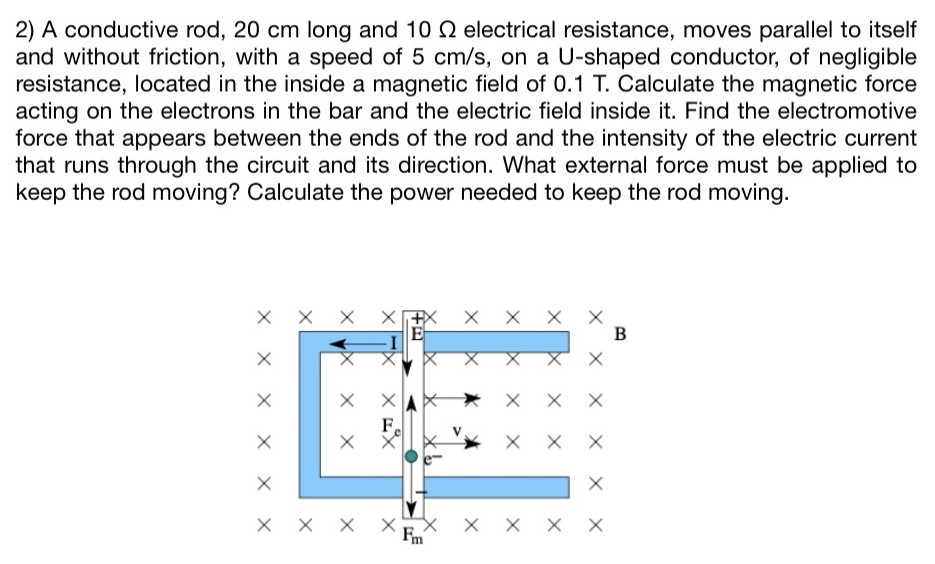A conductive rod, 20 cm long and 10 Ω electrical resistance, moves parallel to itself and without friction, with a speed of 5 cm/s, on a U-shaped conductor, of negligible resistance, located in the inside a magnetic field of 0.1 T. Calculate the magnetic force acting on the electrons in the bar and the electric field inside it. Find the electromotive force that appears between the ends of the rod and the intensity of the electric current that runs through the circuit and its direction. What external force must be applied to keep the rod moving? Calculate the power needed to keep the rod moving.
